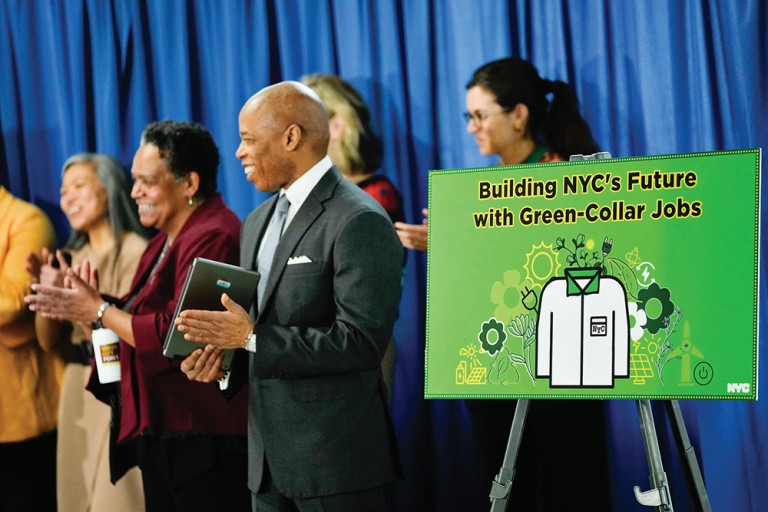By Forum Staff
Mayor Eric Adams introduced the city’s first-ever climate budgeting publication through the city’s Fiscal Year 2025 Executive Budget. Climate budgeting is a process that incorporates science-based climate considerations into the City’s budget decision-making process by evaluating how actions and spending today contribute to meeting longer-term climate targets and needs. The process will allow the City to understand the climate impact of the dollars the City spends, identify where more effort is needed to tackle climate change, and champion forward-looking investments.
New York City is the first big city in the United States to adopt climate budgeting, joining other elite global cities, such as London, Oslo, and Mumbai, to utilize the process. Now, for the first time ever, climate will be formally integrated into the City of New York’s decision-making to ensure climate considerations are prioritized in all relevant investment decisions. Climate budgeting is a new tool in the city’s arsenal to achieve its stated goal of getting to net-zero emissions by 2050 and bolster its resiliency to extreme heat and flooding.
Starting this year, the New York City Mayor’s Office of Management and Budget has embedded new management practices into the city budgeting process. OMB assessed progress toward climate goals and needs, including through the development of the first annual forecasts of citywide and city government emissions through 2050, and first assessment of projects in the city’s capital commitment plan for alignment with net-zero emissions and flood and extreme heat resiliency goals. The process also initiates a requirement that climate data be provided for capital projects and alongside all relevant agency funding requests, and, moving forward, all proposed sustainability and resiliency investments will be centrally reviewed to prioritize for impact and cost-effectiveness.
Key findings from the first climate budgeting cycle include:
The climate actions the City is taking today puts it on track to achieve science-based emissions targets in 2030, with additional effort required to achieve net-zero emissions by 2050, Adams noted.
Private building emissions limits through Local Law 97 are the most impactful action the city is taking, followed by the Green Rides program to electrify for-hire vehicles.
New York City government is on track to meet and exceed its own Local Law 97 targets in 2030 through planned investments in energy efficiency, building and fleet electrification, and a commitment to procure 100 percent renewable electricity for its operations.
City action, supported by state commitments to transition to a 100 percent clean electric grid and away from gas-powered vehicles, is key to achieving long-term goals.
Capital projects that include funding for fossil fuel-powered generators, vehicles, and heating and hot water systems, present key opportunities for the city to continuously evaluate the feasibility of greener alternatives, such as electrification, battery storage, and electric vehicles.
“By embedding climate into our budget decision-making, we are changing the very calculus of government spending going forward and acknowledging that climate must be at the forefront of what we do,” Adams said. “From this day on, we will have the tools to evaluate the impact of city projects and programs on achieving the city’s climate-related goals.”

